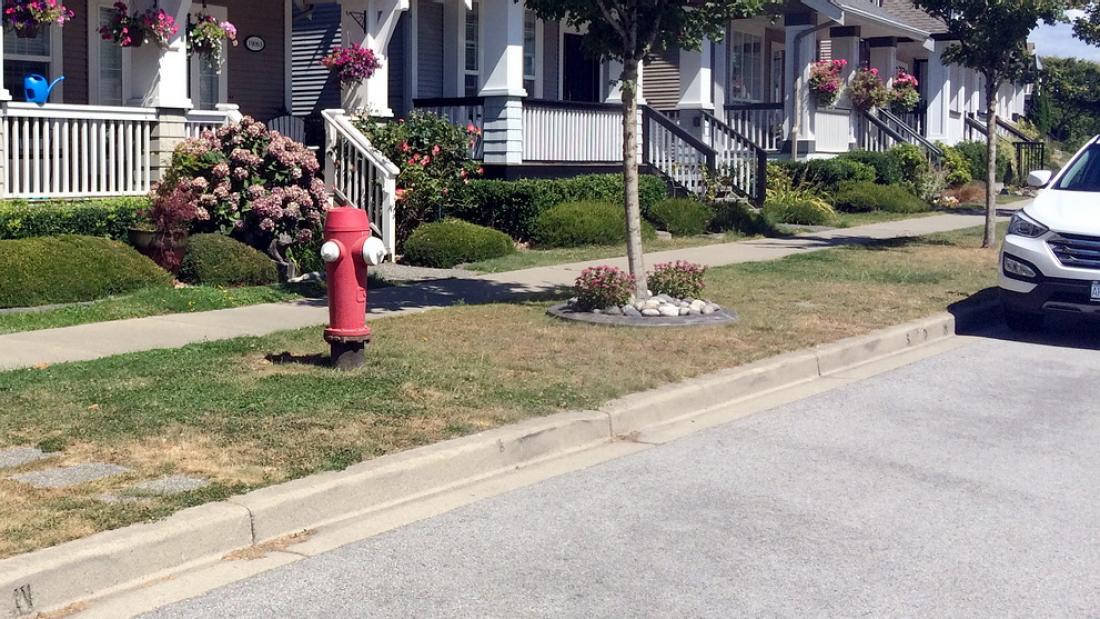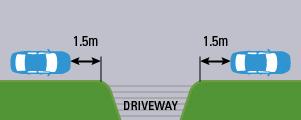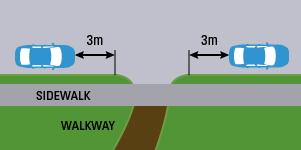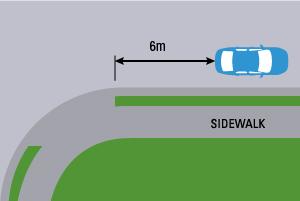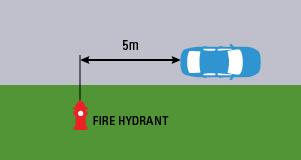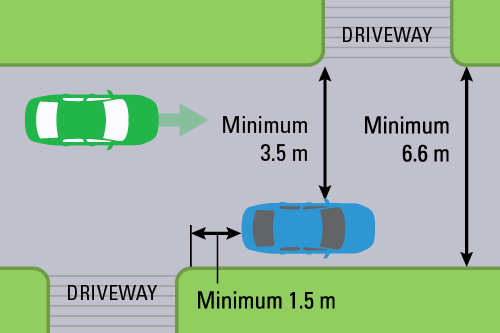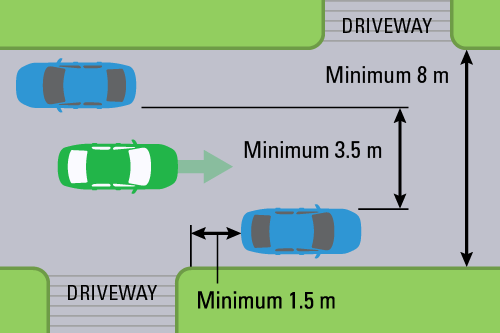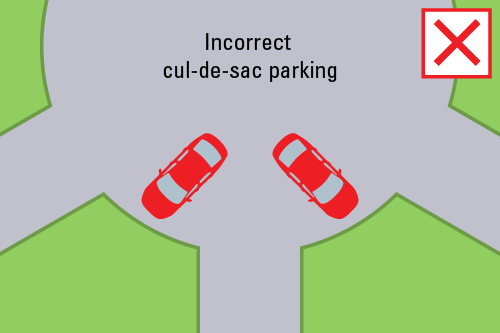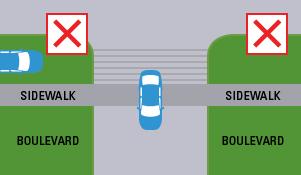Parking Without Sign Regulations
Parking regulations may be in effect whether or not there is a sign. Learn how to avoid a ticket.
On-street parking regulations when there are no signs
Find out the parking rules for parking on unsigned streets in Surrey, including parking near intersections and curbs, and angle, backlane and boulevard parking.
Increasing the number of signs can lead to confusion and increase distracted driving. Too many signs create unnecessary clutter along City streets.
Please note the City of Surrey has not painted curbs since 2004, curb markings should not be regarded as a legal requirement.
Parking Without Signs
Parking Adjacent to Crosswalks
Parking is not allowed within 15 metres of the approach of a crosswalk or six metres beyond a crosswalk that is not at an intersection, unless otherwise indicated by a traffic control device.
Parking Adjacent to Driveways
Parking is not allowed in front of or within 1.5 meters of either side of a driveway.
Parking Adjacent to Walkways
Walkways are paths for the sole use of pedestrians and cyclists.
Parking is not allowed in front of or within 3 meters of either side of a walkway entrance to the road.
Parking Adjacent to Intersections
An intersection is where 2 roads meet. This includes roads, streets, and highways. A vehicle cannot park within 6 meters from the end of a curb return.
Parking Adjacent to Fire Hydrants
Fire hydrants in the City of Surrey are red or green in colour. The City of Surrey does not mark the roadway next to fire hydrants. Vehicles are not allowed to park within 5 meters of a fire hydrant. The measurement is taken by drawing a straight line to the roadway, and then measuring 5 meters in either direction.
Parking on Queuing Streets (Streets with One Travel Lane)
A queuing street is a type of local road that has only 1 travel lane and drivers must pull over to allow oncoming traffic to pass (generally a shorter road).
Queuing streets have a benefit of acting as a traffic calming measure that lowers the speeds of vehicles within the area. They also minimizes the impermeable area of the road, reducing the demand on the stormwater management system.
Queuing Street with Parking on One Side
Parking is generally permitted on only one side of a queuing street if it is 6.6 to 8.0 metres wide.
Parking is usually provided on the side of the road with the most available curb space for parking.
Vehicles must park such that a 3.5 metre travel lane is still available for emergency vehicle access.
Queuing Street with Parking on Both Sides
Parking is generally permitted on both sides of a queuing street if it is at least 8.0 metres wide.
Vehicles must park such that a 3.5-metre travel lane is still available for emergency vehicle access.
Parking in Cul-de-Sacs
Vehicles in cul-de-sacs must park parallel to the roadway. "Nose in” or angle parking is not permitted:
Vehicles in cul-de-sacs that park at an angle reduce the turnaround area available for vehicles. Emergency vehicles and garbage trucks may not be able to access houses in cul-de-sacs if vehicles are parked at an angle, as they require a much larger turn radius than most passenger vehicles.
Vehicles must also be parked a minimum of 1.5 metres away from a driveway. As a result, many cul-de-sacs are not designed to allow street parking.
Parking in Back Lanes
Provided that the visibility and passage of pedestrians, vehicles and garbage trucks are not obstructed, parking in back lanes is generally permitted.
However, many back lanes are not wide enough to permit parking, or have driveways that are too closely spaced.
Please refer to our parking in back lanes brochure for more details.
Parking on Sidewalks and Boulevards
A sidewalk is defined as the area between the curb lines or lateral lines of a roadway and the adjacent property lines that has been improved for use of pedestrians, or any other improved area set aside for pedestrian use only.
As sidewalks are designed for the use of pedestrians, vehicles blocking any portion of a sidewalk may cause pedestrians to enter traffic to get around the parked vehicle. If you have a sidewalk at the end of your driveway, ensure your vehicle does not hang over the sidewalk to avoid a parking ticket.
A boulevard is defined as the grass or gravel area between the curb lines or the shoulder of a roadway and the adjacent property line. Parking is not permitted on the boulevard, as it is City property and needs to be well-maintained.
Parking on Streets Maximum Time
Vehicles that are parked legally and not time limited by any posted signs may stay in the same location without moving for up to 72 hours.
